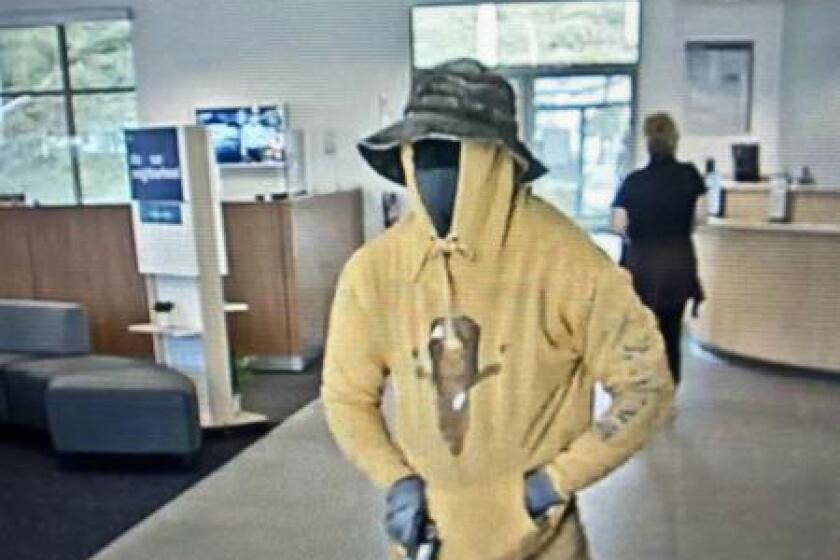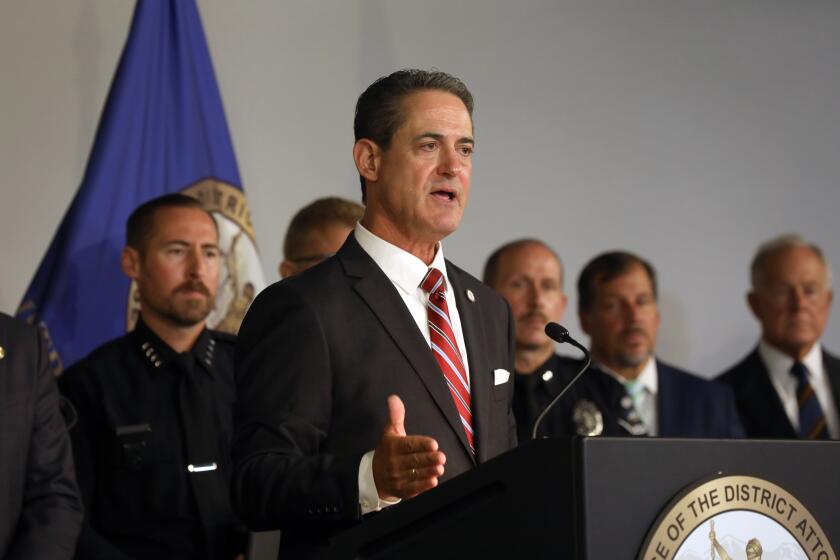Families Total 43% of Homeless, Survey Reports
Families constitute an increasingly larger part of the urban homeless population in 1993 and almost a third of families seeking emergency shelter were turned away this year, according to a survey of 26 cities released Tuesday by the U.S. Conference of Mayors.
While single men once constituted the bulk of the homeless population, their numbers are now equaled by members of families, the survey found. Each group represents about 43% of the homeless population, while single women represent 11% and unaccompanied children the remainder.
Overall, the need for emergency shelter rose by an average of 10%, another clear indication that the number of homeless Americans is on the rise, according to St. Paul, Minn., Mayor James Scheibel, co-chairman of the Conference of Mayors’ Task Force on Hunger and Homelessness.
In Los Angeles, the increase in requests for shelter was especially high--35% overall and 50% for families.
The Conference of Mayors, which publishes the survey on homelessness every year, stressed that the most disturbing news in the latest report was the growing percentage of families without homes and the failure of government and private services to address the shift.
“Previous years’ estimates have shown families accounting for about one-third of the population seeking help,” said St. Louis Mayor Freeman Bosley Jr., the other co-chairman of the task force. “But this year, cities put families with children at 43% of this population.”
In Los Angeles and San Diego, families represented 25% of the homeless population, lower than the national average but higher than in years’ past.
“We’ve encountered more children and families living in the streets and in makeshift shelters,” said Arnold Garcia, senior management analyst for the homeless coordinator’s office, part of the Los Angeles Department of Community Development.
“It’s a phenomenon that has been occurring over the last couple of years, but we have not taken measures to address it. Whatever shelters we have had usually dealt with single men and women. We’re going to have to focus on the creation of more shelters for families.”
The rate of increase in 1993 in the number of emergency beds available for homeless families varied markedly across the country, from 43% in San Antonio to only 1.5% in Los Angeles.
“Despite an average increase of 4% in the number of shelter beds during the year, shelters in 85% of our surveyed cities had to turn away some homeless families due to lack of resources,” Bosley said. “On average, cities estimate that 25% of the requests for emergency shelter were unmet in 1993.”
The survey showed that the ability of cities to meet families’ needs for shelter has declined over the years and was worse this year than at any time since the Conference of Mayors began keeping the data in 1988. The percentage of families being denied shelter jumped radically from 15% in 1991, to 20% in 1992, to 29% in 1993.
Other cities in which families constitute a large percentage of the homeless population are New York City, 75%; Kansas City, Mo., 73%, and Trenton, N.J., 77%.
The increase in homeless families can be attributed to shortages of jobs that pay enough to support a family and an insufficient social safety net to help them, according to the Conference of Mayors.
In Los Angeles, the reasons are a high unemployment rate and a decrease in government assistance offered to people in poverty, Garcia said.
“With less relief, they’re unable to afford even the least expensive apartments,” he said.
Andrew Cuomo, an assistant secretary of the Department of Housing and Urban Development, called families without homes the “hidden homeless.”
“That population is growing and that population is the most vulnerable,” Cuomo said. “The public is not aware of it because it is not visible.”
HUD Secretary Henry G. Cisneros has made reducing homelessness a top priority and hopes to persuade Congress to double federal funding for emergency shelters from $800 million in fiscal 1994 to $1.6 billion in 1995, Cuomo said.
“I’m optimistic we’ll get enough of an increase to make a difference,” Cuomo said. “We must first slow the tide and then stem the tide and then reverse the tide. I would be happy if we could slow the increase by next year.”
The mayors and homeless advocates said that the best way to decrease the number of homeless is to increase the availability of government-subsidized housing.
Although Cisneros is pushing for an increase in money in the 1995 budget to fund federal housing programs, Cuomo said, it is unclear whether he will be successful.
The current wait for public housing in some cities is as long as four years. In Los Angeles it is two years and in San Diego, three to four years.
The new report highlighted the difficulty Cisneros faces in trying to decrease homelessness. The growing proportion of homeless families makes this a particularly difficult challenge because housing families is much more expensive than housing single adults, Cuomo said.
Fred Karnas, executive director of the National Coalition for the Homeless, said that the increase in homeless families reflects the impact of the Ronald Reagan and George Bush administrations’ failure to provide the money to address the growing need of poor families for inexpensive housing.
“It has been a decade of gradually cutting back the larger housing programs,” said Karnas, whose organization, a nonprofit homeless advocacy group, has members in all 50 states. “That has had a significant impact of destroying the safety net for women and children.”
Homeless advocates said that the report reflected their impressions of a change in the homeless population.
“It confirms what we’ve seen . . . ,” Karnas said. “When the effort to address homelessness began, it was focused on single men. It has taken time for people to retool their efforts.”
Portrait of the Homeless
A survey by the U.S. Conference of Mayors found the homeless were:
RACIAL BREAKDOWN Black: 56% Anglo: 27% Latino: 13% Native American: 3% Asian: 1% *
WHO THEY ARE 48% are substance abusers 43% are families with children 27% are mentally ill 18% had full- or part-time jobs 11% are single women Source: U.S. Conference of Mayor’s Task Force on Hunger and Homelessness, based on statistics from 26 cities compiled between Nov. 1, 1992 and Oct. 31, 1993. Data from Census Bureau and Bureau of Labor Statistics was also used.
More to Read
Sign up for Essential California
The most important California stories and recommendations in your inbox every morning.
You may occasionally receive promotional content from the Los Angeles Times.










